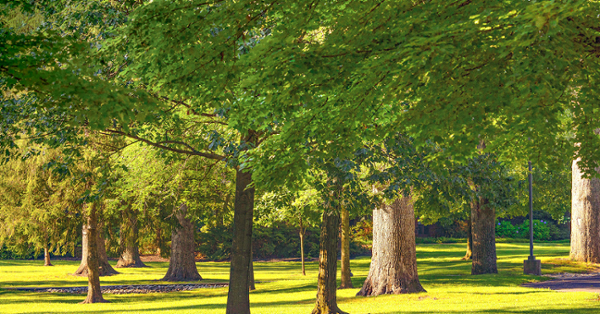Rowan University Arboretum receives global accreditation
Rowan University Arboretum receives global accreditation

At least a couple thousand stately trees shade Rowan University’s Glassboro campus. Their numbers include 10 species of soaring oaks, eight varieties of leafy maples, seven kinds of pines and, new this year, a sweetgum sapling germinated from a seed flown on a NASA mission around the moon.
Now, after years of research, careful labeling and the development of a robust online catalog of its leafy sentinels, Rowan University has been awarded Level I Accreditation by The ArbNet Arboretum Accreditation Program and The Morton Arboretum for achieving particular standards of professional practices deemed important for arboreta and botanic gardens.
The ArbNet Arboretum Accreditation Program is the only global initiative to officially recognize arboreta at various levels of development, capacity and professionalism. Rowan University is also now recognized as an accredited arboretum in the Morton Register of Arboreta, a database of the world’s arboreta and gardens dedicated to woody plants.
“This accreditation is recognition of our long commitment to environmental preservation and sustainability,” said Rowan University President Ali A. Houshmand. “We’ve seen a steady increase in students interested in studying the natural world, a topic of deep interest to this generation. This year alone, we’ve planted 105 new trees on our main campus. We’re proud to be recognized for our efforts.”
Led by an interdisciplinary team of faculty, staff and students, the Rowan University Arboretum is intended to serve as a “living laboratory,” according to its mission statement, “for students and visitors to explore the interconnectedness of plants, animals, people and the environment to inspire new learning, research and creative ideas.”
While many of its more than 100 tree species predate the 101-year-old institution, other specimens were planted in its early decades by faculty, staff and students to beautify the campus.
Covering roughly 200 acres on either side of Route 322, the arboretum features native species, such as white oak (Quercus alba) and Eastern white pine (Pinus strobus), black walnut (Juglans nigra) and Eastern red cedar (Juniperus virginiana), as well as non-native specimens, including Japanese zelkova (Zelkova serrata), white mulberry (Morus alba) and ginkgo (Ginkgo biloba).
The latter includes an “overly mature” female on the University Green, a particular favorite of Dr. Sara Wright, assistant teaching professor in the Department of Biological & Biomedical Sciences, who co-led the latest effort to document the University’s collection of trees.
Though previous attempts had been made to establish the arboretum, ongoing work to research, document and label Rowan’s trees began in Wright’s Plant Diversity course in 2021. Each student takes ownership of a different species.
The arboretum’s online presence is overseen by Michael Benson, coordinator of the Rowan University Libraries Digital Scholarship Center and Wright’s co-lead on the project.
“Building the project provided many of our student assistants with real-world work experiences in biology, research, mapping, photography, media design and illustration,” Benson said.
Lilliana De Salas, now a graduate student in Rowan’s complex biological systems doctoral program, was among the students and staff who photographed trees through the seasons for the website. She also assisted with editing students’ essays for the arboretum’s website.
The trees are “another part of our community,” De Salas said. “A lot of the trees are really old. It makes you think about how long they’ve been there and how our ideas about trees have changed.”
But the big draw is outside.
Wright regularly leads free walking tours around campus to teach people about the area’s biodiversity, native and invasive tree species, the stories behind some special specimens and environmental stewardship.
“Part of what we’re trying to do is not just teach people about trees, but to cultivate an empathy for them and a care for one another and the environment,” Wright said.
And that big old gingko that everyone loves? It’s a story itself.
“The species itself is special,” Wright said. “It’s called a living fossil. It’s the only species left in an entire group of trees. But that particular tree is my favorite because of its connections to the university.”
She has heard stories from Rowan retirees and alumni about studying beneath its outflung limbs. Some believe it was planted by John Sangree, Rowan’s first biologist, science professor and botanist.
“There’s something about people moving through this space, but the trees remaining,” Wright said. “I almost feel it.”